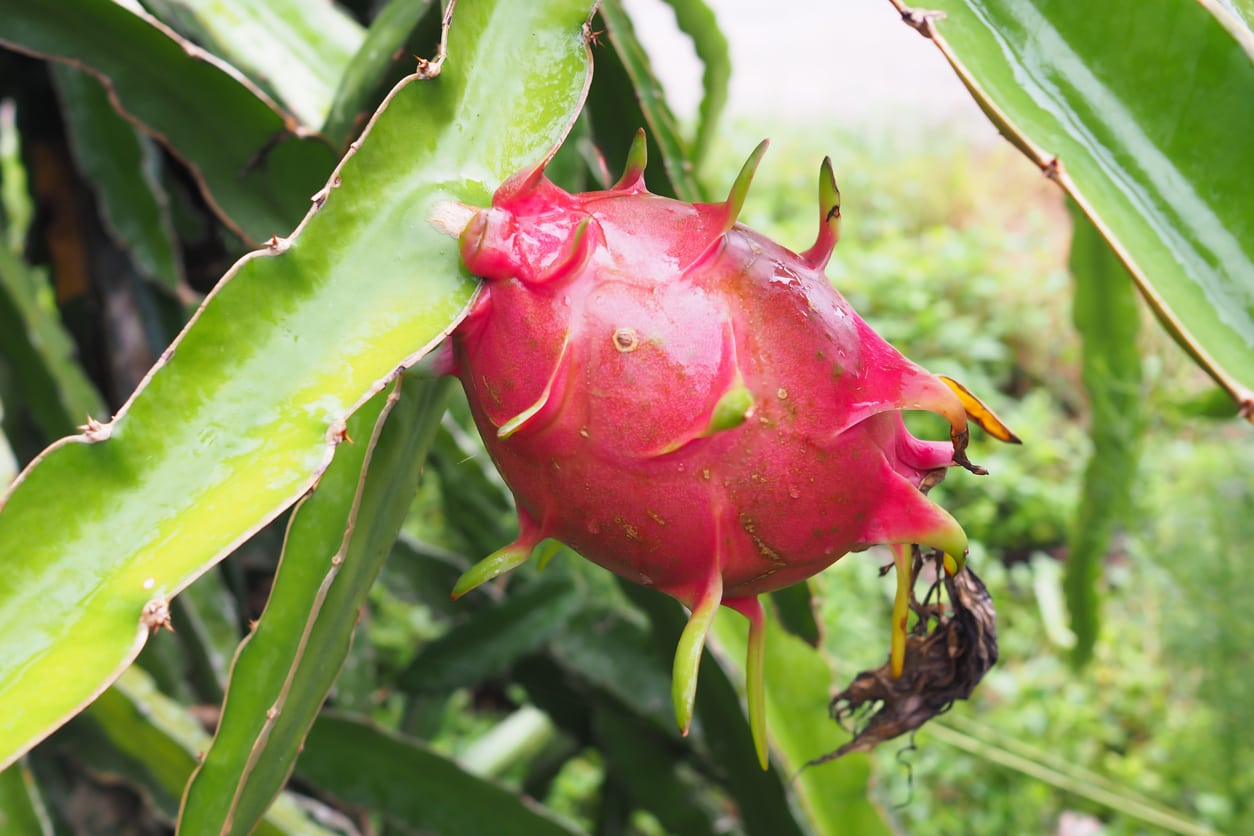How To Get Dragon Fruit: Reasons For No Fruit On Pitaya Cactus Plants


Dragon fruit, also frequently called pitaya, is the fascinating, thoroughly tropical looking fruit you may have seen in the market. This bright pink, scaly fruit comes from a long, winding cactus of the same name. Provided you have warm temperatures and enough space, you can grow a dragon fruit cactus at home. What do you do though if your pitaya won’t fruit? Keep reading to learn more about reasons dragon fruit won’t develop and how to make dragon fruit bear fruit.
Reasons for No Fruit on Pitaya Cactus
There are a few possible reasons your pitaya won’t fruit. The most likely cause is inadequate growing conditions. The dragon fruit cactus is a tropical plant, which means it likes heat. If temperatures are below 65 degrees F. (18 C.), your plant is unlikely even to form flowers. If it’s cool out, bring your plant indoors or, better yet, move it to a greenhouse to try to induce flower and fruit production. Another common problem is light. A pitaya needs lots of light to fruit, and especially if you’re keeping yours indoors, it just might not be getting enough. Make sure your plant is in a spot that receives a full six hours of sun per day. If you can’t manage this indoors, place it under bright lights instead. It’s also possible your dragon fruit won’t develop fruit because of a lack of moisture. Since it’s a cactus, many gardeners assume the pitaya doesn’t need much water. In fact, it likes its soil to be kept consistently moist and should be given about an inch (2.5 cm.) of water per week. Dragon fruits usually only develop in the summer, when temperatures are high and the days are long. If it’s winter you likely won’t see any fruit. By increasing the above elements, however, you can extend the fruiting season somewhat.
How to Get Dragon Fruit
Pitaya cacti reach maturity quickly and with proper care should produce fruit for 20 to 30 years. Proper care is key, though. The plants are very long, and can reach 40 feet (12 m.) in length. To encourage fruiting you should give your cactus a tall, sturdy trellis to climb. Always remove damaged or dying branches. Prune the tips of the uppermost branches to encourage more lateral growth and fruit development.
Sign up for the Gardening Know How newsletter today and receive a free copy of our e-book "How to Grow Delicious Tomatoes".

The only child of a horticulturist and an English teacher, Liz Baessler was destined to become a gardening editor. She has been with Gardening Know how since 2015, and a Senior Editor since 2020. She holds a BA in English from Brandeis University and an MA in English from the University of Geneva, Switzerland. After years of gardening in containers and community garden plots, she finally has a backyard of her own, which she is systematically filling with vegetables and flowers.